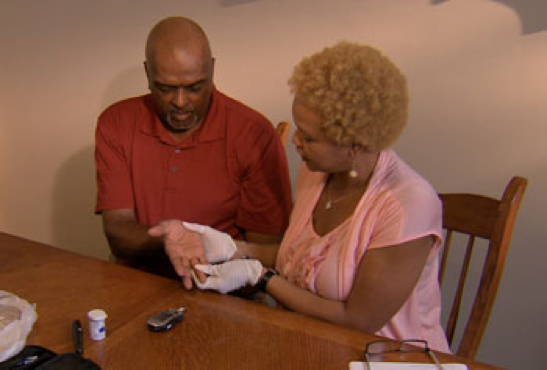
When you provide care for a person who has Diabetes mellitus, you need to know how to measure their blood sugar (called blood glucose). The person’s blood glucose is a measure of their health.
Diabetes
Measuring blood glucose helps a person with diabetes manage their disease. The level of a person’s blood glucose determines:

Drop of blood applied to test strip
Measuring blood glucose requires a very simple blood test. You place a test strip into a small glucose meter. Then you prick the person’s finger with a sterile lancet and squeeze a small drop of blood onto the test strip. In a few seconds the meter displays the amount of glucose in the blood. The person’s doctor will tell you how often the person should check their blood glucose.
Learn how to measure a person’s blood glucose in case he or she becomes ill or has trouble handling the test meter or lancet.
Safe blood glucose monitoring requires you to:
By tracking blood glucose levels each day, a person will have a record showing how well their diabetes is under control.